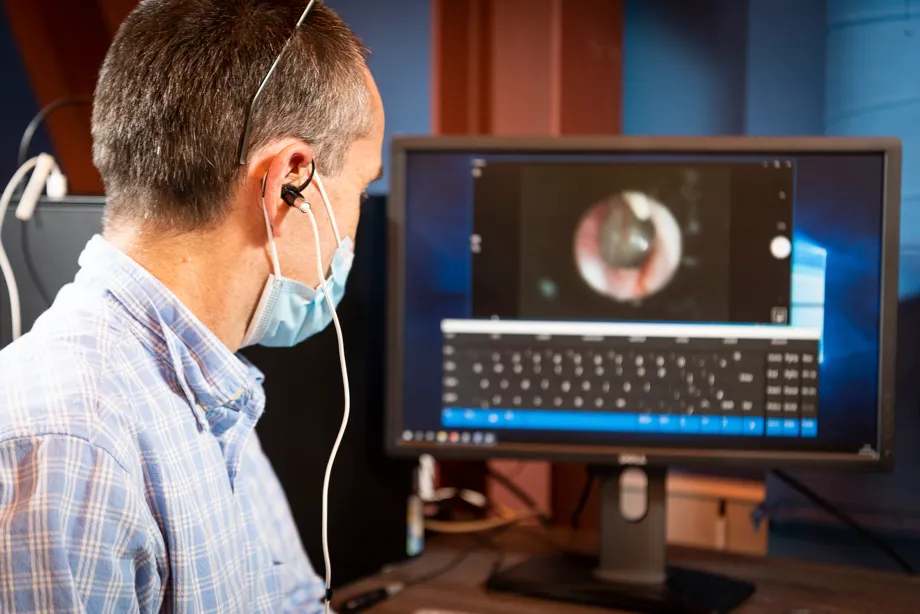A revolutionary device could allow people with neurological conditions to communicate again using a tiny hidden ear muscle.
The Earswitch device is being developed by a GP and a team of researchers at the University of Bath and could offer a new voice for people with conditions such as Motor Neurone Disease (MND) who want to communicate.
Earswitch enables people to control a keyboard by tensing a muscle in the ear, called the tensor tympani muscle.
GP Dr Nick Gompertz has developed a prototype involving an assistive keyboard like the one used by the late Professor Stephen Hawking. But whereas Prof Hawking's communication device relied on him tensing a muscle in his cheek, this new device uses a muscle in the ear.
The device is linked to the tensor tympani muscle, which for some can be controlled voluntarily.This muscle is one of the smallest in the body and was once thought to help protect the eardrum from loud noise.
It is believed that control of this muscle might be preserved in people who have locked-in syndrome due to stroke, or with late-stage MND.

Current existing assistive devices can become unusable as neurological conditions such as MND worsen over time.The new Earswitch device might offer a breakthrough for individuals with the most severe communications restrictions.
“When I was a medical student, I witnessed people losing the ability to use keyboards that they relied on to communicate," said Gompertz.
“I have always been aware of the ability to tense a muscle in my ear, and so wondered if it could be used to control these communication devices.
“Years later, after watching a documentary about a talented, non-verbal 13-year-old who had written a book with just his eyes by looking at a physical spelling board, I tried again and successfully discovered how to achieve this."
Read more about assistive tech:
- New hearing aid that costs less than £1 to make could help millions
- 'Culturally competent' robot improves mental health in the elderly
“Many people won’t have ever noticed this muscle in their ears. But when they are asked to concentrate when they yawn they may notice the muscle makes it more difficult to hear, which may also cause a fullness or rumbling sensation in their ears."
The team's current working prototype is a miniature camera held in a silicone ear-piece, like a single earphone. This camera is able to pick up the movement of the eardrumwhen a person intentionally tenses the middle ear muscle.
“This movement is detected by the computer and controls an on-screen keyboard," explains Gompertz.
“The keyboard scans sequentially through rows of letters, then groups of letters, allowing single letters to be selected by a simple ‘ear-click’.”
“Tremendous advances are being made in developing assistive technologies to improve the lives of people with neurological conditions," said Dr Brian Dickie from the MND Association.
“Due to the severe paralysis that occurs with MND, new and innovative approaches are needed to allow people to be able to use these technologies.
“It appears that the tensor tympani muscle may remain functional even in advanced stages of MND, so the Earswitch may offer a completely new opportunity to give people with MND greater control over how they communicate, how they can control their environment – ultimately the way they choose to live their lives.”
Gompertz said there was huge potential for Earswitch, beyond helping those with communication difficulties.
“My goal has always been to help people to communicate,” he said.
“However, beyond those with neurological conditions there is potentially a huge application to use this technology in other, future assistive applications – for example answering calls via headphones or pods while on the move.”
As there is little data about what proportion of the population can voluntarily move their tensor tympani muscle, the team are asking the general public to complete a short, 5-minute online survey. This will help them understand how people could benefit from Earswitch:



